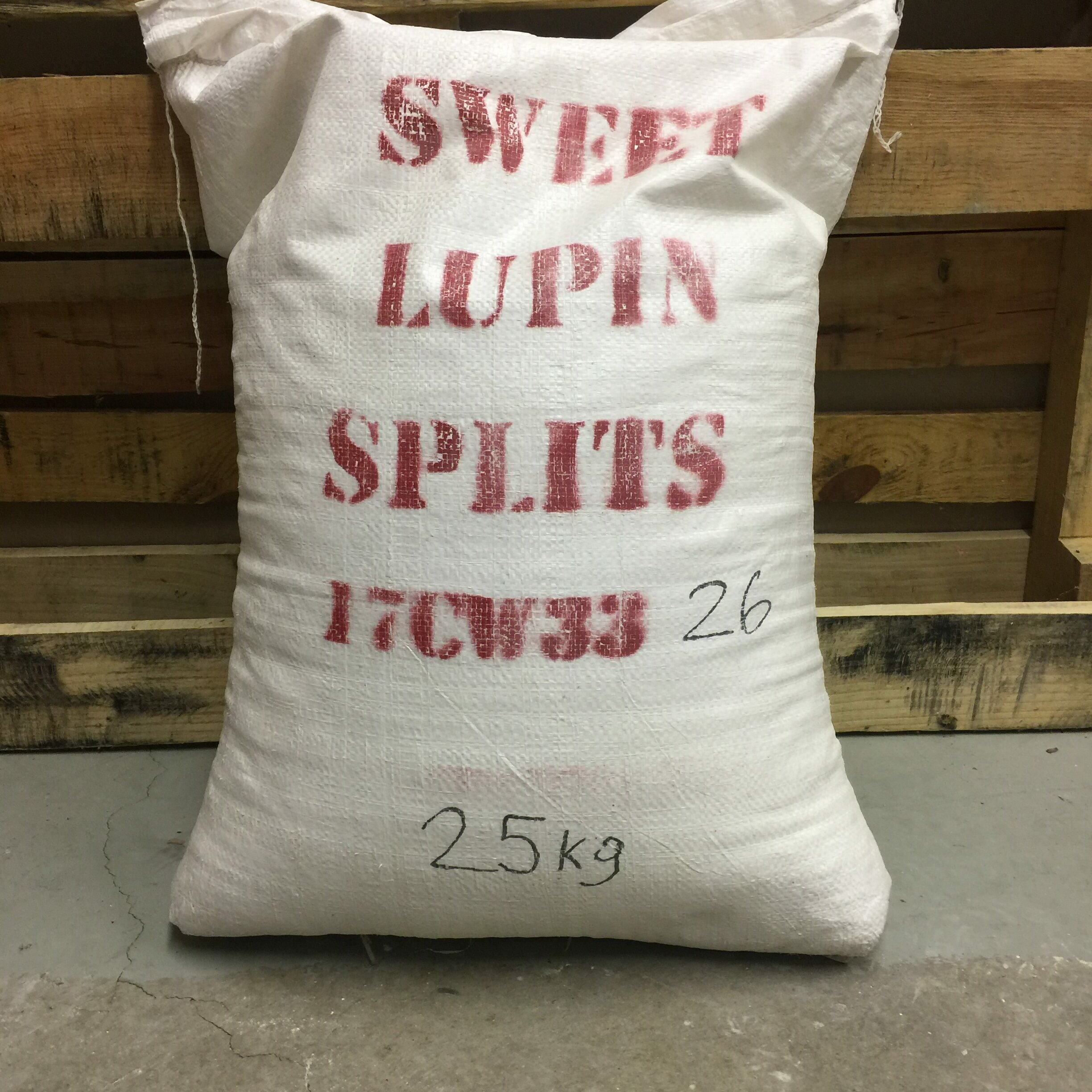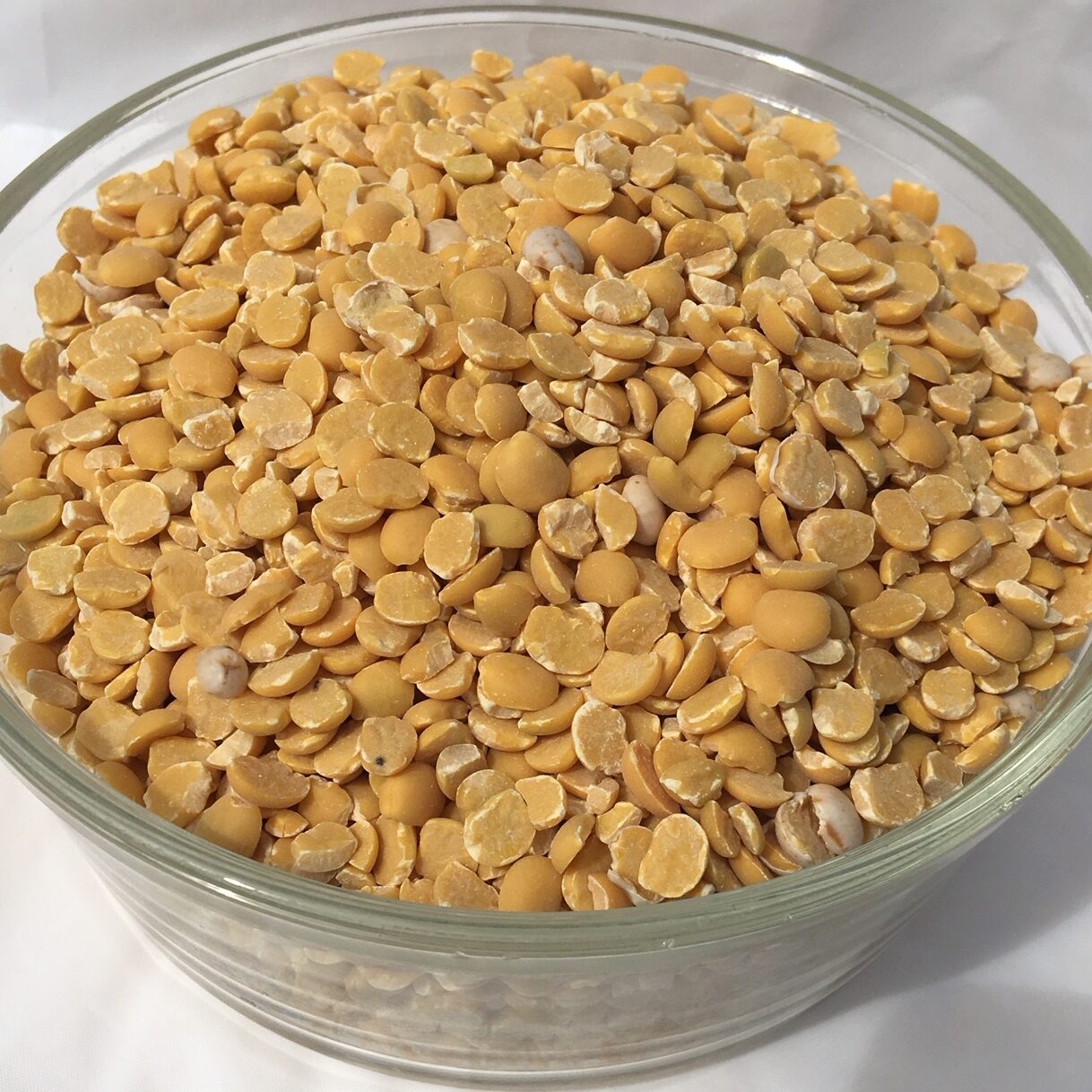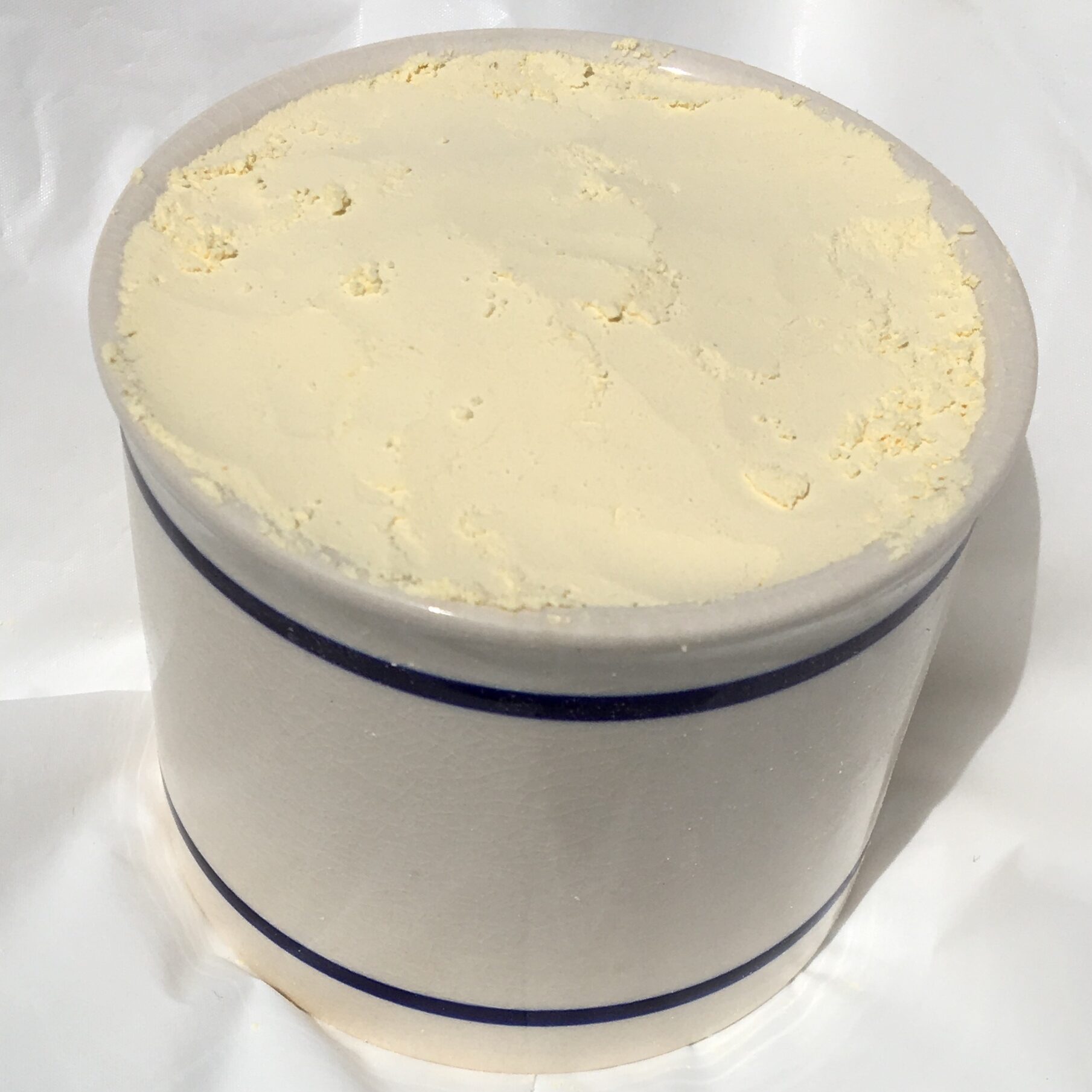LUPIN Flour is a highly nutritious, easily digestible, world-class food product. It is arguably the highest source of natural, unprocessed protein flour in existence and may exceed all flour sources, processed and unprocessed, in proteins, digestibility and the bio-availability of essential nutrients.
LUPIN Flour is one of the highest sources of dietary fiber : 40g per 100g flour dry basis.
LUPIN Flour is high in essential amino acids, cholesterol free, contains negligible amounts of Trypsin Inhibitors, known to interfere with digestion often found in other legumes.
LUPIN Flour is also very low in Lectins and Saponins, two known gastric irritants, the latter of which afflicts the soybean even after extensive baking and processing.
LUPIN Flour is also low in Phytic Acid, which in the soybean, due to its higher content, binds with calcium and zinc, rendering them nutritionally unavailable.
LUPIN Flour does not require heat or chemical treatment, thus rendering it a superbly healthy food, by any standards.
The only anti-nutritional aspect – the alkaloids, have been bred out, therefore we have the Australian Sweet Lupin.
LUPIN flour does contain a modest amount of bio-active sugars ~8% oligossacharide sugars. Oligosaccharides are utilized as nutritional supplements to promote the growth of beneficial intestinal bifidobacteria (prebiotics) that improve the resistance to gastrointestinal infections caused by Escherichia coli, Clostridium and Salmonella spp.
LUPINS have been grown and the seed used as food since ancient times. The Roman writer Pliny said of the lupin that "if taken commonly at meals, it will contribute a fresh color and a cheerful countenance".
Two thousand years later, lupins are once again a source of good cheer as medical scientists have revealed that Australian Sweet Lupins:
- Increase satiety
- Modify the Glycemic Index and reduce the Glycemic Load of carbohydrate foods
- Reduces hypertension
- Lowers colon pH, and significantly increases production of SCFA in particular butyrate.
- Very high source of both soluble and insoluble fiber: 40g per 100g flour dry basis.
- Prebiotic, both oligosaccharides and pectic fibers shown to be bifidogenic
- Very high source of essential amino acid
- Gluten free
- Non GMO
LUPIN THE GRAIN WITHOUT STARCH, BUT PROTEIN AND FIBER.
LUPIN ADDS NUTRITION.
Adding about 20% lupin flour to wheat flours will give a product with similar properties to the wheat product, but with an improvement in amino acid score from under 40% to over 80% relative o egg albumin (Uauy et al., 1995).
PROTEIN & PROTEIN QUALITY
LUPIN FLOUR – HAS NO ANTI-NUTRITIONAL ELEMENT. IT DOES NOT REQUIRE HEAT TREATMENT OR SOLVENT TREATMENT
Therefore its protein content is not denatured and remains in a highly soluble and bioavalable form.
- Lupin is one of the top 3 natural sources of arginine.
- The essential amino acid profile (except sulphur-containing amino acids) of lupin is close to the amounts recommended by WHO
- lupin protein with methionine supplementation – has a true digestibility of over 90%.
- lupin proteins balance the lysine content of cereal products, and cereal products balance the low sulphur amino acids of lupin.
Yáñez et al. (1985) showed that adding lupin (L. albus) flour to wheat flour improved protein concentration, amino acid score and PER in rats. Schoeneberger et al (1983) report that raw as well as processed lupin protein showed an excellent apparent digestibility (80.0–85.8%; casein, 87.1%). The observed NPU and BV values confirmed the importance of methionine supplementation. The true digestibility of 92% was equivalent to that of casein. The complementation effects of mixing lupin protein with proteins from wheat, oat, barley, rice, maize, resulted in PER values that exceeded by far those of the proteins fed separately (true complementation). These mixtures resulted in PER values equal to those for casein or other animal proteins and may be applied as an economical way to prevent and combat malnutrition.
Lupin protein is easily digestible by humans. The bioavailability and post prandial utilization of sweet lupin (Lupinus albus) flour protein is similar to that of purified soybean protein in human subjects: a study using intrinsically N-labelled proteins, Mariotti et al., 2001. Giampietro et al (2008) the authors of the paper “Acceptability of lupin protein products in healthy competitive athletes” had this to say:
“Currently, however, there is growing interest in the use of lupin proteins, since lupin seed is characterized by a very high protein percentage and a relatively low content of anti-nutritional factors with respect to other legumes[8], and contains negligible amounts of phytoestrogens [9, 10]. This last feature may avoid the potential problems that have been recently indicated for these hormone-like components that are very abundant in soy proteins [11,12]. Lupin proteins are nutritionally satisfactory [13–15], and have a neutral flavor[16], allowing the production of food items with optimal sensory characteristics [17, 18].”
FIBER
Diets naturally high in fiber can be considered to bring about several main physiological consequences:
- helps prevent constipation
- reduces the risk of colon cancer
- improvements in gastrointestinal health
- improvements in glucose tolerance and the insulin response
- reduction of hyperlipidemia, hypertension, and other coronary heart disease risk factors
- reduction in the risk of developing some cancers
- increased satiety and hence some degree of weight management
These effects are not due to a single fiber type but the summation of the different fiber classes in the diet.
LUPIN FIBER CONTAINS THREE ELEMENTS OF THE FIBER CLASSES:
- SOLUBLE
- INSOLUBLE
- OLIGOSACCHARIDES (PREBIOTIC)
SOLUBLE FIBER: When soluble fiber is fermented, short-chain fatty acids (SCFA) are produced. SCFA are involved in numerous physiological processes promoting health, including:
- lower colonic pH (i.e., raises the acidity level in the colon) which protects the lining from formation of colonic polyps and increases absorption of dietary minerals
- provide nourishment of colonocytes, particularly by the SCFA butyrate
- improve barrier properties of the colonic mucosal layer, inhibiting inflammatory and adhesion irritants, contributing to immune functions
- stabilizing blood glucose levels by acting on pancreatic insulin release and liver control of glycogen breakdown
- stimulate gene expression of glucose transporters in the intestinal mucosa, regulating glucose absorption
- suppress cholesterol synthesis by the liver and reduce blood levels of LDL cholesterol and triglycerides responsible for atherosclerosis
- stimulate production of T helper cells, antibodies, leukocytes, cytokines, and lymph mechanisms having crucial roles in immune protection
SCFA that are absorbed by the colonic mucosa pass through the colonic wall into the portal circulation (supplying the liver), and the liver transports them into the general circulatory system. Overall, SCFA affect major regulatory systems, such as blood glucose and lipid levels, the colonic environment, and intestinal immune functions. The major SCFA in humans are butyrate, propionate, and acetate, where butyrate is the major energy source for colonocytes, propionate is destined for uptake by the liver, and acetate enters the peripheral circulation to be metabolized by peripheral tissues. Studies have demonstrated positive effects on calcium and other mineral absorption, immune system effectiveness, bowel pH, reduction of colorectal cancer risk, inflammatory bowel disorders (Crohn's Disease and Ulcerative Colitis) Hypertension (high blood pressure) and intestinal regularity. Recent human trials have reinforced the role of Prebiotics in preventing and possibly stopping early stage colon cancer. It has been argued that many of these health effects emanate from increased production of short-chain fatty acids (SCFA) by the stimulated beneficial bacteria. Thus food supplements specifically enhancing the growth of SCFA producing intestinal bacteria (such as clostridia and bacteroides species) are widely recognized to be beneficial.
While research does clearly demonstrate that prebiotics lead to increased production of these SCFA's, more research is required to establish a direct causal connection. It has been argued that prebiotics are beneficial to Crohn's Disease through production of SCFAs to nourish the colon walls, and beneficial to Ulcerative Colitis through reduction of Hydrogen Sulfide gas due to reduction of sulfate-reducing bacteria, which do not thrive in the slightly acidic environment SCFAs create.
The immediate addition of substantial quantities of prebiotics to the diet may result in a temporary increase in gas, bloating or bowel movement. It has been argued that chronically low consumption of prebiotic-containing foods in the typical Western diet may exaggerate this effect.
Human colonic bacteria substrates are relatively stable. Production of SCFA and fermentation quality are reduced during long-term diets of low fiber intake. Until bacterial flora are gradually established to habilitate or restore intestinal tone, nutrient absorption will be impaired and colonic transit time temporarily increased with an immediate addition of higher prebiotic intake.
INSOLUBLE FIBER: Dietary fiber, particularly insoluble fiber, increases stool weight and, decreases gut transit time and in so doing, helps to relieve constipation. Insoluble fiber, is resistant to fermentation in the gut and is excreted in the feces. It increases stool weight by holding water.
Benefits of insoluble fiber; by improving bowel function, dietary fiber can reduce the risk of diseases and disorders such as diverticular disease, hemorrhoids and constipation. Increased faecal bulk and decreased transit time allows less opportunity for carcinogens to interact with the walls of the intestine. Dietary fiber may also bind or dilute secondary bile acids which are potentially carcinogenic. Similarly, dietary fiber may reduce the toxic effect of heavy metals and pesticides.
PREBIOTICS: are non-digestible food ingredients, such as oligosaccharides, which are used as a source of fuel for bacteria in the gut. Without food, these bacteria cannot survive and perform their beneficial effects in the large bowel. Oligosaccharides have been shown to stimulate the growth and/or activity of beneficial bacteria, such as bifidobacteria, and to reduce the concentration of pathogenic bacteria, such as Escherichia coli, Clostridia, and bacteroides. Hence prebiotics contribute to the overall health of the bowel.
LUPINA, LLC
WWW.LUPINNAUSA.COM








